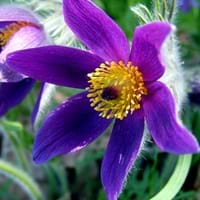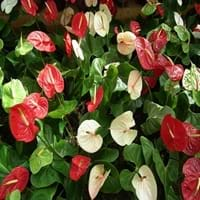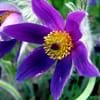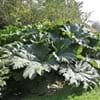Life Span
Annual and Perennial
Perennial
Type
Perennial
Tender Perennial
Origin
Europe, Eastern Europe, Southern Europe, Western Europe, United Kingdom
Mexico, Latin America and the Caribbean, Central America, South America
Types
Pulsatilla vulgaris, Pulsatilla vulgaris rubra, Pulsatilla vulgaris alba
Not Available
Number of Varieties
Not Available
Habitat
meadows, Slopes, Wooded slopes
gardens, Near ponds
USDA Hardiness Zone
5-7
Not Available
AHS Heat Zone
7-5
Not Available
Sunset Zone
2b, 3a, 3b, 4, 5, 6, 15, 16, 17
Not Available
Habit
Clump-Forming
Not Available
Minimum Width
Not Available
Flower Color
Indigo, Purple, Violet
Not Available
Flower Color Modifier
Not Available
Not Available
Fruit Color
Greyish Brown
Not Available
Leaf Color in Spring
Light Green
Green, Dark Green
Leaf Color in Summer
Light Green
Green, Dark Green
Leaf Color in Fall
Light Green
Green, Dark Green
Leaf Color in Winter
Light Green
Green, Dark Green
Leaf Shape
Rosette
Heart-shaped
Plant Season
Spring
Spring, Summer, Fall, Winter
Sunlight
Full Sun
Full Sun, Partial Sun, Partial shade
Growth Rate
Slow
Not Available
Type of Soil
Loam, Sand
Loam, Sand
The pH of Soil
Neutral, Alkaline
Acidic, Neutral, Alkaline
Soil Drainage
Well drained
Well drained
Bloom Time
Early Spring, Spring
Indeterminate
Tolerances
Drought
Drought
Where to Plant?
Ground, Pot
Ground, Pot
How to Plant?
root cutting, Seedlings
Seedlings
Plant Maintenance
Medium
Medium
Watering Requirements
Medium
Keep the ground moist but not water-logged, Water Deeply, Water in morning to avoid prompting diseases, Water when soil is dry
In Summer
Lots of watering
Lots of watering
In Spring
Moderate
Moderate
In Winter
Average Water
Average Water
Soil pH
Neutral, Alkaline
Acidic, Neutral, Alkaline
Soil Type
Loam, Sand
Loam, Sand
Soil Drainage Capacity
Well drained
Well drained
Sun Exposure
Full Sun
Full Sun, Partial Sun, Partial shade
Pruning
Remove damaged leaves, Remove dead branches, Remove dead leaves
Cut leaves after fall, Remove damaged leaves, Remove dead leaves, Remove deadheads, Shape and thin as needed
Fertilizers
All-Purpose Liquid Fertilizer
General garden fertilizer
Pests and Diseases
Cutworms, Larvae of Agave Weevil
Aphids, Mealybugs, Scale
Plant Tolerance
Drought
Drought
Flower Petal Number
Single
Not Available
Fragrant Flower
No
Not Available
Fragrant Fruit
No
Not Available
Foliage Texture
Fine
Not Available
Foliage Sheen
Matte
Not Available
Self-Sowing
Yes
Not Available
Attracts
Not Available
Not Available
Allergy
convulsions, Diarrhea, Not Available, Stomach pain, Vomiting
no allergic reactions
Aesthetic Uses
along a porch, deck or patio, Showy Purposes
Beautification, Showy Purposes
Beauty Benefits
Not Available
Not Available
Environmental Uses
Air purification
Air purification
Medicinal Uses
Not Available
No Medicinal Use
Part of Plant Used
Not Available
Flowers
Other Uses
Showy Purposes
Showy Purposes, Used as Ornamental plant
Used As Indoor Plant
No
Yes
Used As Outdoor Plant
Yes
Yes
Garden Design
Alpine, Mixed Border, Rock Garden / Wall
Bedding Plant, Container, Cutflower, Houseplant, Tropical
Botanical Name
PULSATILLA vulgaris
ANTHURIUM scherzerianum
Common Name
Pasque Flower, wind flower, prairie crocus, Easter Flower, meadow anemone
Flamingo Flower
In Hindi
Pasque Flower
राजहंस फूल
In German
Kuhschellen
Flamingoblume
In French
Pasque Flower
flamant rose fleur
In Spanish
Pasque Flower
flamenco flor
In Greek
Pasque Flower
Flamingo λουλούδι
In Portuguese
Pasque Flower
flamingo flor
In Polish
Sasanka
flamingo kwiat
In Latin
Pasque Flower
flos Flamingo
Phylum
Vascular plant
Magnoliophyta
Class
Magnoliopsida
Liliopsida
Order
Ranunculales
Alismatales
Family
Ranunculaceae
Araceae
Genus
Pulsatilla
Anthurium
Clade
Angiosperms, Eudicots
Angiosperms, Monocots
Subfamily
Not Available
Not Available
Difference Between Pasque Flower and Flamingo Flower
If you are confused whether Pasque Flower or Flamingo Flower are same, here are some features about those plants to help you choose better. Many people think that these two plants have the same characteristics, but one can see Pasque Flower and Flamingo Flower Information and learn more about it. Fertilizers required for proper growth of Pasque Flower are All-Purpose Liquid Fertilizer, whereas for Flamingo Flower fertilizers required are General garden fertilizer. Hence, one should know the basic difference between Pasque Flower and Flamingo Flower if you are planning to have them in your garden to enhance its beauty.
<
Flowering PlantsImportance of Pasque Flower and Flamingo Flower
Want to have the most appropriate plant for your garden? You might want to know the importance of Pasque Flower and Flamingo Flower. Basically, these two plants vary in many aspects. Compare Pasque Flower and Flamingo Flower as they differ in many characteristics such as their life, care, benefits, facts, etc. Every gardener must at least have the slightest clue about the plants he wants to plant in his garden. Compare their benefits, which differ in many ways like facts and uses. The medicinal use of Pasque Flower is Not Available whereas of Flamingo Flower is No Medicinal Use. Pasque Flower has beauty benefits as follows: Not Available while Flamingo Flower has beauty benefits as follows: Not Available.
Compare Facts of Pasque Flower vs Flamingo Flower
How to choose the best garden plant for your garden depending upon its facts? Here garden plant comparison will help you to solve this query. Compare the facts of Pasque Flower vs Flamingo Flower and know which one to choose. As garden plants have benefits and other uses, allergy is also a major drawback of plants for some people. Allergic reactions of Pasque Flower are convulsions, Diarrhea, Not Available, Stomach pain and Vomiting whereas of Flamingo Flower have no allergic reactions respectively. Having a fruit bearing plant in your garden can be a plus point of your garden. Pasque Flower has no showy fruits and Flamingo Flower has showy fruits. Also Pasque Flower is not flowering and Flamingo Flower is not flowering . You can compare Pasque Flower and Flamingo Flower facts and facts of other plants too.





